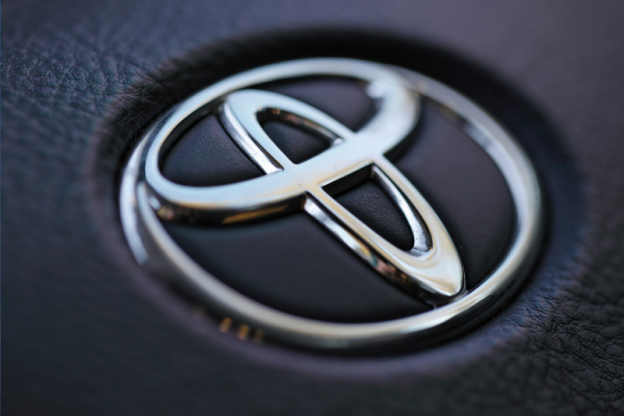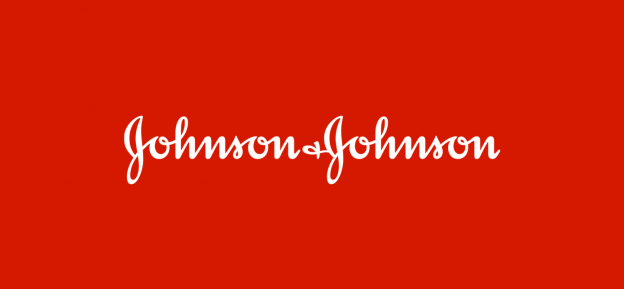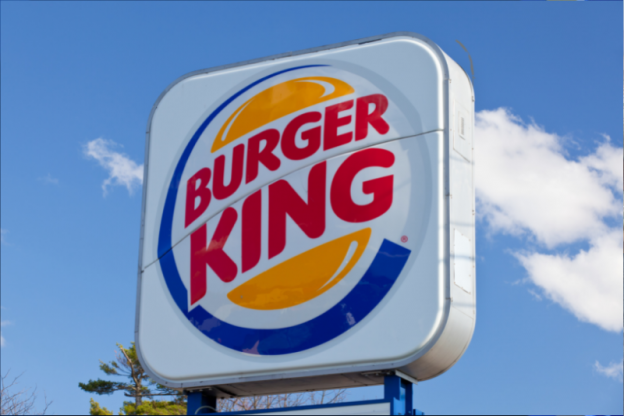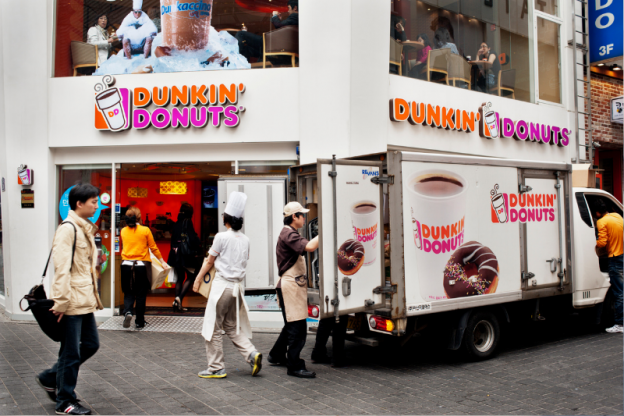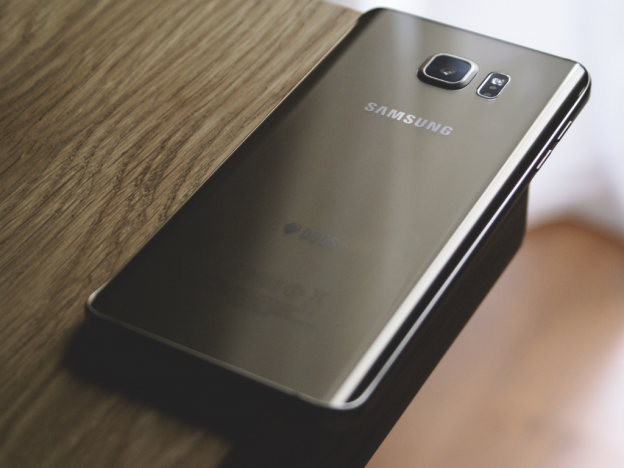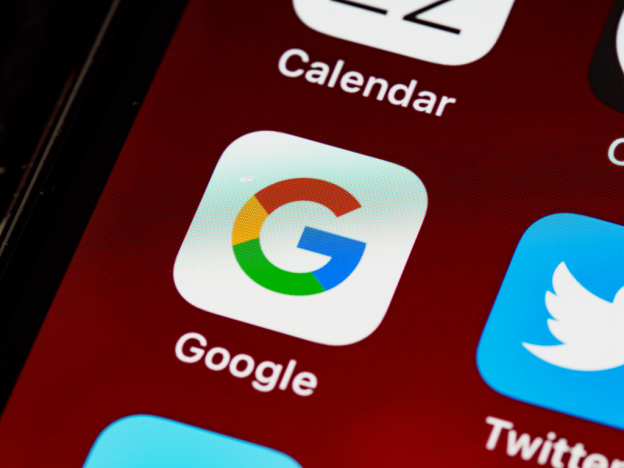This is a free P&G SWOT analysis available for all students. You should use it only as a reference.
Company Details
| Founded: | October 31, 1837, Cincinnati, Ohio, United States |
| Founders: | William Procter, James Gamble |
| Headquarters: | Cincinnati, Ohio |
| Industry: | Soaps and Cosmetics |
| CEO: | Jon R. Moeller |
| Revenues ($M): | $78,346 |
| Profits ($M): | $14,510 |
| Market Value ($M): | $389,811 |
| Employees: | 101,000 |
| Subsidiaries: | The Gillette Company,… |
For an average consumer, the P&G brand may not sound familiar but the products and subsidiaries under this umbrella company are truly phenomenal. The company was founded in 1837 and the main attractions were only candles and soap.
Today, the brand portfolio covers Pantene, Gillette, Pampers, Duracell, and many more are governed by P&G. Even with the economic recession and the pandemic wreaking havoc on both humans and businesses, P&G managed to come out victorious through strong financial planning and supply chain.
In 2014, the company went under a serious reconstruction leading to the survival of only 65 brands out of 300. Since the remaining companies drive more than 95% of the revenue for the company, the umbrella company made amazing overall sales strides after that step.
Need a comprehensive Procter & Gamble SWOT Analysis with updated facts and figures? We have got it covered for you! Our team of researchers has ample resources to conduct an excellent SWOT Analysis of P&G. So, make an order now!
SWOT Analysis of Procter & Gamble
Through SWOT Analysis, we can determine the real internal and external strategic factors that are either driving a company’s growth or running them into the ground.
A SWOT Analysis is based on evaluating the following elements in a company or a sector:
- Strengths
- Weaknesses
- Opportunities
- Threats
A SWOT Table is plotted in a square with four equal quadrants. Each quadrant carries significant information about each of the elements.
Before we move to the SWOT table, let’s analyze each of the elements in detail.
Procter & Gamble Internal Factors
Strengths and weaknesses are categorized in the internal strategic factors because they are almost in complete control of the brand. In the case of Procter & Gamble Company, let’s take a look at both before moving on to the opportunities and threats.
Strengths
The SWOT Analysis strengths are the competitive advantage points and expertise areas that are giving P&G a head start compared to its competitors. The more points of strength a brand has, the more successful that brand is.
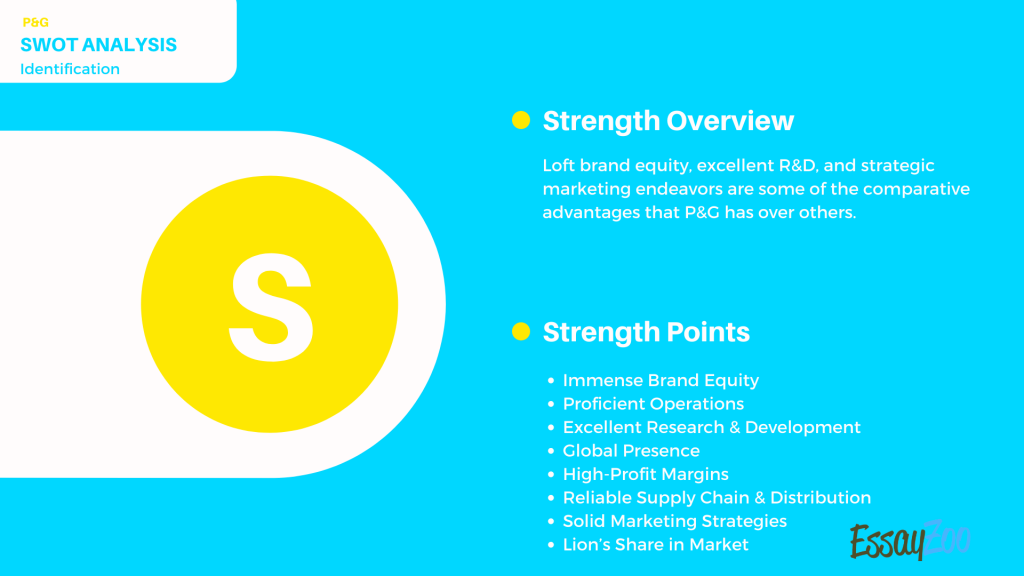
Immense Brand Equity
One of the top strength points for P&G is its immense brand value and equity. Procter & Gamble Company owns some of the most popular brands in the modern economy. Names like Pantene, Vicks, Pampers, Gillette, etc., are governed by the parent company – P&G.
Proficient Operations
P&G is one of the pioneers in economies of scale in its operations. This allows for augmented profits as the demand and other indicators of the company soar on financial and customer satisfaction grounds. This is another feather in Procter and Gamble’s cap.
Excellent Research & Development
P&G spends a fortune on research and development for its numerous products. As a leading fast-moving consumer goods brand, it needs to be ahead of the market in terms of product discrimination, pricing, and development of products.
Global Presence
Procter & Gamble is one of the leading brands that are enjoying truly global character. As of now, it is present in over 180 countries. With a solid product line and global presence, P&G is riding the high tide.
High-Profit Margins
P&G is one of the leaders in keeping marketing expenditure and distribution optimized to get higher profit margins. That’s why it has the highest margins in the FMCG industry.
Reliable Supply Chain & Distribution
Procter & Gamble Company has one of the most proficient supply chain and distribution channels in the industry. It does not matter if it is a rural, urban, or online space, P&G rules the market in terms of distribution and demand meeting.
Solid Marketing Strategies
The company is one of the most successful and optimized budgets when it comes to different strategies and returns. This is another strong point for the brand.
Lion’s Share in Market
When compared to other competitors, including Unilever, Procter & Gamble enjoys a lion’s share in the pie for consumer goods.
Superior Consumer Retention & Adoption
Consumers tend to stick with P&G for their excellent products resulting in superior customer retention and adoption.
Weaknesses
The inherent drawbacks or disadvantages in a company’s business model or its operations are called weaknesses.
Following are some of the most influential weaknesses in the P&G SWOT Analysis.
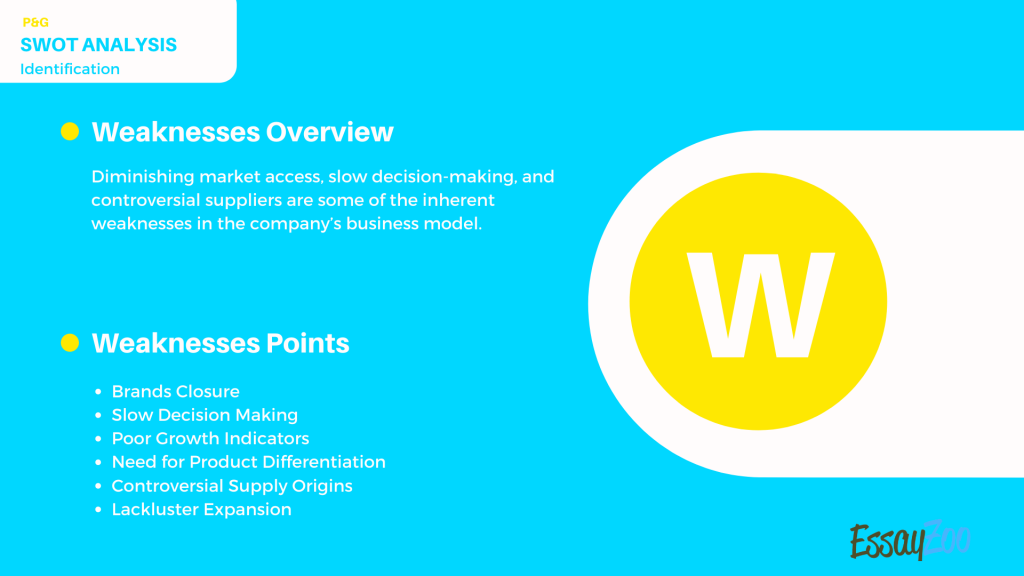
Brands Closure
Procter & Gamble decided to close over 200 brands to streamline its operations. This resulted in lost capital. The company is still catching up with the losses.
Slow Decision-Making
Being a megabrand, P&G has a slow and dated decision-making mechanism because the top management has to take care of so many brands. This resulted in delays in price-sensitive decisions and issue resolutions.
Poor Growth Indicators
Due to saturation in consumer adoption and plateaued innovation, P&G is showing poor growth indicators. This is one of the biggest weaknesses of the system.
Need of Product Differentiation
For now, the products are getting alike with very little difference in their nature and branding, such as soaps, beauty care, pet food, and so on. This is causing consumers to move to other brands.
Controversial Supply Origins
P&G is dependent on some of the suppliers that do not fulfill the criteria set by ant-forced labor groups. This puts the brand in a detrimental position against its competitors.
Lackluster Expansion
The industry for beauty and personal care products is a very dynamic one. It needs new exciting trends every month. This makes the company hard to expand based on poor product renewals.
Procter & Gamble External Factors
External factors constitute the opportunities and threats that P&G could be facing in both the short and long term.
Opportunities
Opportunities are the budding market aspects that offer brands such as P&G a way to grow their revenue volume, market reach, and so on.
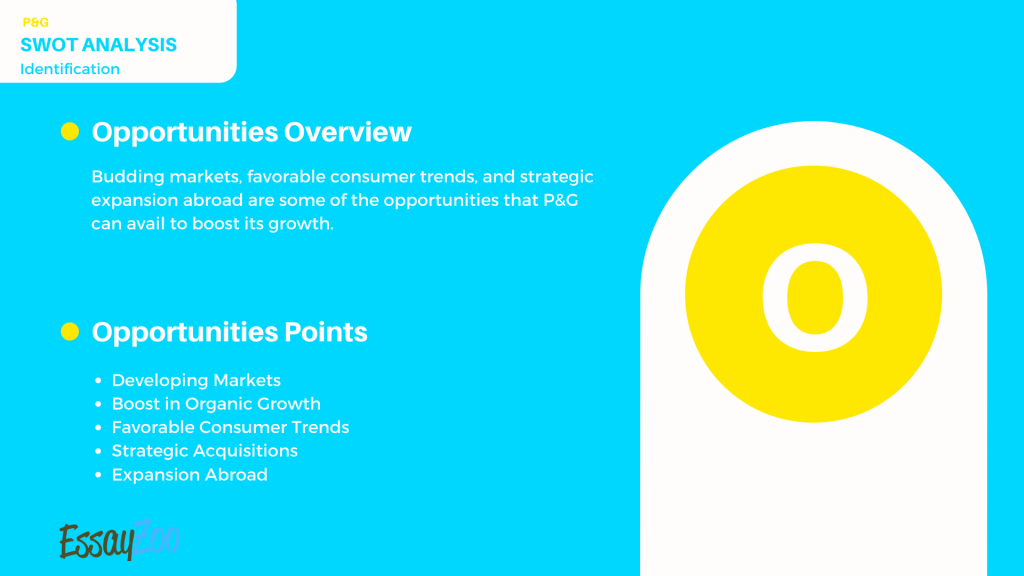
Developing Markets
Rural markets are golden opportunities for FMCG brands to explore and enhance their market share. But it is hard to penetrate them and create solid distribution channels. If P&G manages to do that, it will reap abnormal rewards.
Boost in Organic Growth
Organic growth is necessary for megabrands like P&G to get the consumer goods base back. There is a surge in small retailers because of organic growth through marketing endeavors.
Favorable Consumer Trends
Due to better economic indicators, people are in a better position to afford products and brands offered by P&G. The company can improve its health by taking on the market segment.
Strategic Acquisitions
By acquiring a local company, P&G can grab a market share in regional markets as well as improve its operations. This allows the company to reap rewards instantly instead of building from the ground up.
Expansion Abroad
P&G is phenomenal in the US for the consumer goods segment but is struggling in the new markets. Through targeted marketing and price discrimination, Procter & Gamble Company can replenish its drying revenue streams abroad.
Threats
Threats are serious debilitating aspects that can harm a company’s survival in the market by disturbing its sustainability and growth.
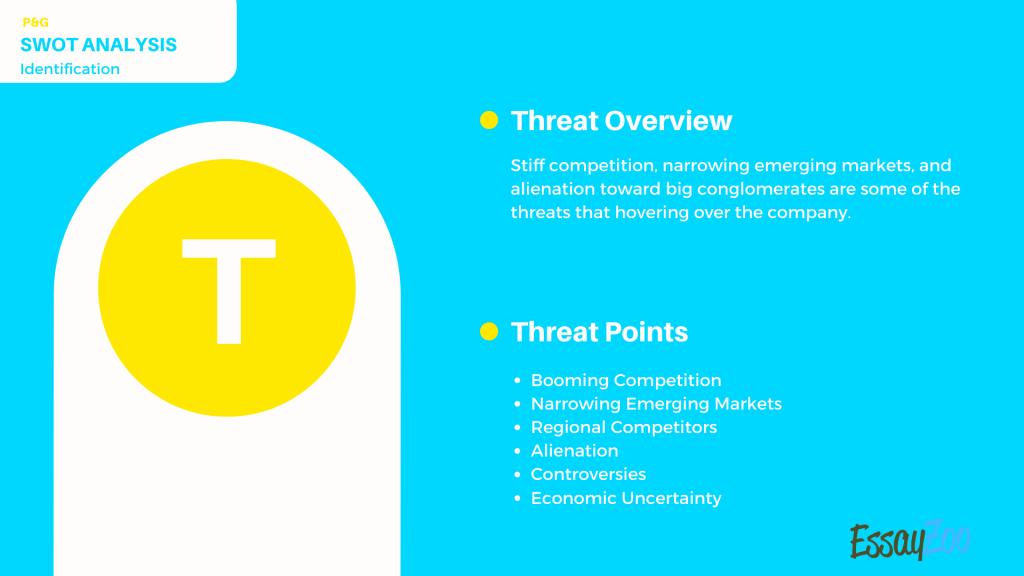
Booming Competition
The booming competition in the FMCG market is catching up with the company. Other brands like Unilever, HUL, and others are offering more and supposedly better products which put the company in a disadvantaged position.
Narrowing Emerging Markets
Emerging markets are going through an overhaul as small businesses and retailers are catching up with the big names. This leaves a very small opening for these markets. This is another big threat to the company.
Regional Competitors
Regional competitors are one of the biggest threats to brands like P&G as they not only stop their approach but diminish the potential to enter the markets.
Alienation
In recent times, people are getting wary of big brands and their products. This puts a big question mark against the survival of companies like P&G. If the condition persists, Procter & Gamble could experience poor growth.
Controversies
From being fined by European Commission over misconduct to lawsuits over Actonel, a prescription drug, the megabrand had its own fair share of controversies and poor reputation. This resulted in poor public perception and declining sales.
Economic Uncertainty
The pandemic and the resulting economic uncertainty greatly affected the business model and operations of the company. Due to declining purchasing powers and behaviors, the company needs to redefine its place in the market to survive.
P&G (Procter & Gamble) SWOT Table
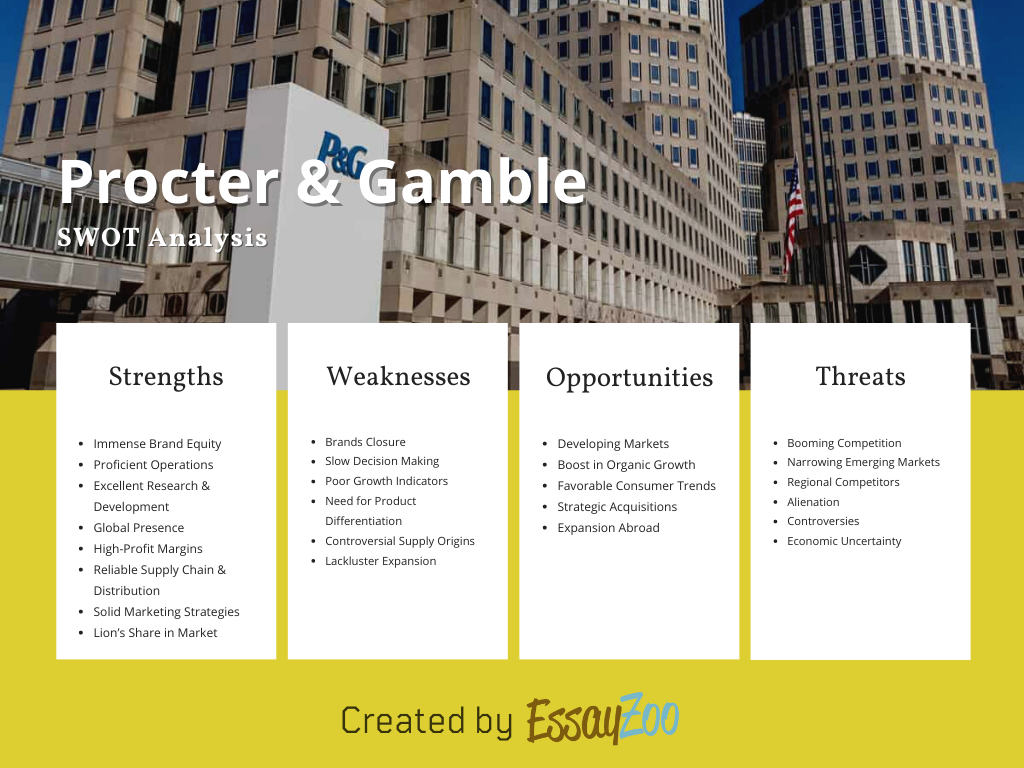
Strengths
- 💪 Immense Brand Equity
- 💪 Proficient Operations
- 💪 Excellent Research & Development
- 💪 Global Presence
- 💪 High-Profit Margins
- 💪 Reliable Supply Chain & Distribution
- 💪 Solid Marketing Strategies
- 💪 Lion’s Share in Market
- 💪 Superior Consumer Retention & Adoption
Weaknesses
- 🤒 Brands Closure
- 🤒 Slow Decision Making
- 🤒 Poor Growth Indicators
- 🤒 Need for Product Differentiation
- 🤒 Controversial Supply Origins
- 🤒 Lackluster Expansion
Opportunities
- 🤑 Developing Markets
- 🤑 Boost in Organic Growth
- 🤑 Favorable Consumer Trends
- 🤑 Strategic Acquisitions
- 🤑 Expansion Abroad
Threats
- 😨 Booming Competition
- 😨 Narrowing Emerging Markets
- 😨 Regional Competitors
- 😨 Alienation
- 😨 Controversies
- 😨 Economic Uncertainty
Read More:
- Disney SWOT Analysis
- Nike SWOT Analysis Essay
- SWOT Analysis: Burger King
- Starbucks SWOT Analysis In 2022
- [2022] McDonalds SWOT Analysis
- Strategic SWOT Analysis of Tesla
- Informative SWOT Analysis of Facebook
- Airbnb SWOT Analysis 2022
- Swot Analysis of Walmart’s Current Situation
- Apple: Strengths, Weaknesses, Opportunities, Threats
- Google SWOT 2022
- SWOT Analysis for Johnson & Johnson – Free Example
- Strengths, Weaknesses, Opportunities, and Threats of UPS
- A SWOT analysis for Coca Cola’s company
- Comprehensive SWOT Analysis of Netflix
- Best SWOT Analysis of Dunkin Donuts
- SWOT Analysis of Chick-fil-A
- SWOT Analysis of Amazon Company
- Free Samsung SWOT Analysis
- Zara SWOT Analysis 2022: A Detailed Report
- In-Depth SWOT Analysis of Toyota

